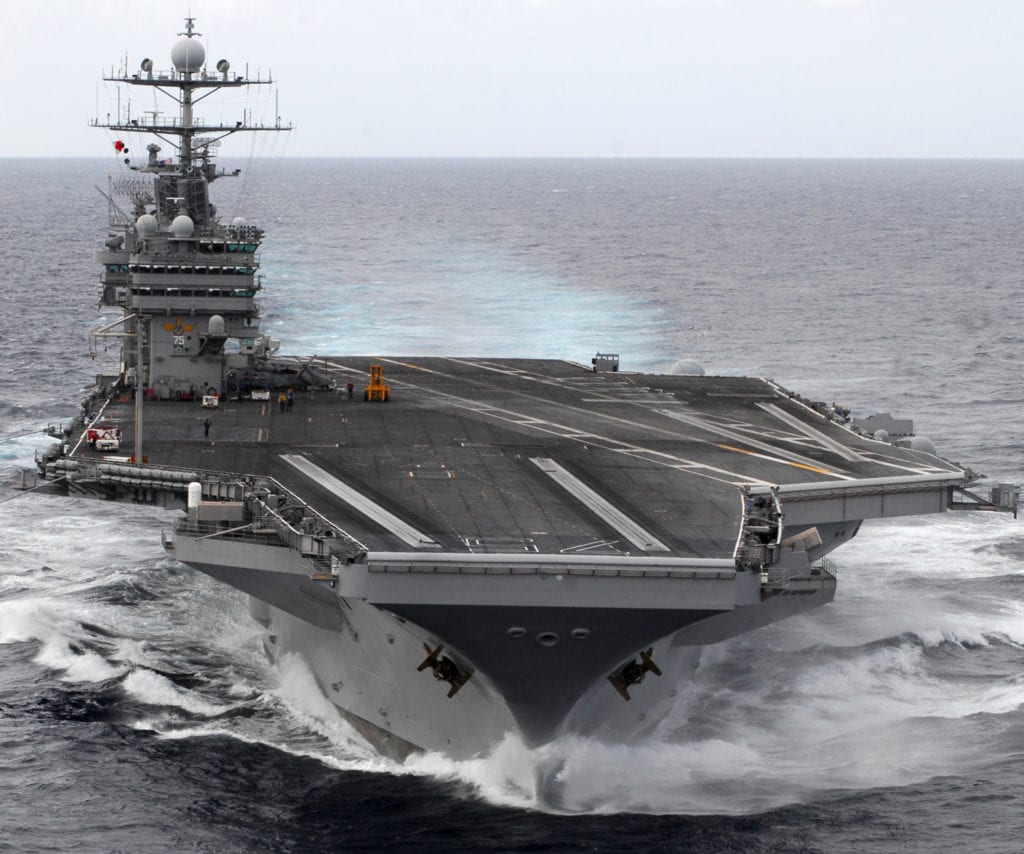
ARLINGTON, Va. — The chairman of the industrial coalition of suppliers for the Navy’s aircraft carriers said the coalition supports continuing to build large aircraft carriers instead of light ones and predicts there will be another dual-carrier procurement in the future.
“We’re strong supporters of the large platform,” said Rick Giannini, chairman of the Aircraft Carrier Industrial Base Coalition (ACIBC), who also is president and chief executive officer of Milwaukee Valve Co. in New Berlin, Wisconsin, in an interview with Seapower.
Giannini said the size of the Navy’s carrier aircraft demand a large flight deck to sustain a high sortie rate and that a large aircraft carrier is the most survivable airfield.
The Navy will be conducting an analysis of the concept of light aircraft carriers.
“I believe the L-class ships [amphibious assault ships] operating with the F-35B would fit that bill,” said Rear Adm. Gregory Harris, the Navy’s director for Air Warfare, speaking last month at a Navy League Special Topic Breakfast webinar, sponsored by General Dynamics. “Others would disagree.”
Harris said he is “confident that over the long run we’ll find that there’s not a compelling return on investment to make a smaller carrier just [because of] speed, station-keeping, the air wing that you would put on top of that carrier, and the ability to have the fuel for the air wing and for the carrier to have for the surface combatants.”
The ACIBC members meet on Capitol Hill every year to lobby Congress. This year’s virtual session included more than 260 companies holding more than 123 scheduled meetings with members of Congress to impress upon them the importance of aircraft carriers to the national defense.
“We’re doing everything we can to get that message out,” Gianni said.
The ACIBC represents the more than 2,000 supplier companies in 46 states, supporting 92,000-plus jobs. These companies inject over $8.8 billion into our nation’s economy.
He was critical of proposed initiatives to retire the USS Harry S. Truman instead of refueling it for another quarter century of service, noting the Navy risks falling below the legally mandated number of 11 aircraft carriers.
That leads right back to the industrial base, because for us it’s all about stability and predictability of where those funds ae coming from,” Giannini said, noting that the Navy’s two-ship buy of CVN 80 and 81 brought a lot of stability to the suppliers.
“We’re always concerned when a new administration comes in every time these things are starting over for the next ship in the class,” he said. “We’re fortunate right now; we have two [CVNs] in the pipeline — orders in [fiscal 2019] for eight years of work. We’re still confident that the reasons carriers have been required for the last 50 years aren’t going to be any different than the requirements for the next 50 to 100 years.
“We remain confident there will be another block buy for [CVNs] 82 and 83, because it is the best way to spend the nation’s money, which is to ensure that the supply base has this steady and predictable stream of work, so we can lower the cost,” he said.
Giannini pointed to the example of a class of valves supplied by his company that, because of the last dual-carrier buy, were produced at 20-25% lower cost. Not only is the cost being reduced because the orders for both ships come at once, but additional cost savings come by being able to order materials at today’s prices rather than at future prices.
- SECNAV Advocates Increased Legal Immigration to Increase Shipbuilder Workforce - April 23, 2024
- Insitu Going Strong at 30, Focusing on Maritime Operations - April 8, 2024
- Navy Awards Boeing Additional Funds for MQ-25 Drones for Testing - April 3, 2024






